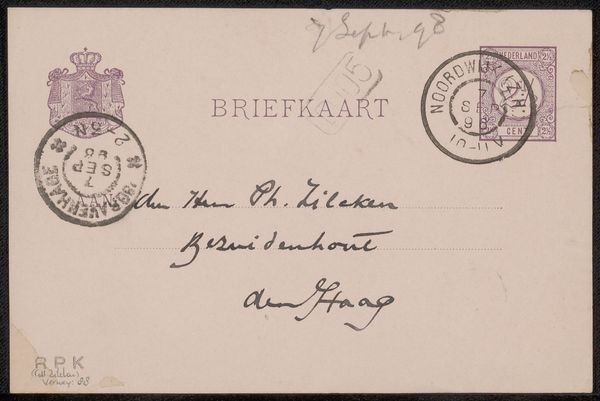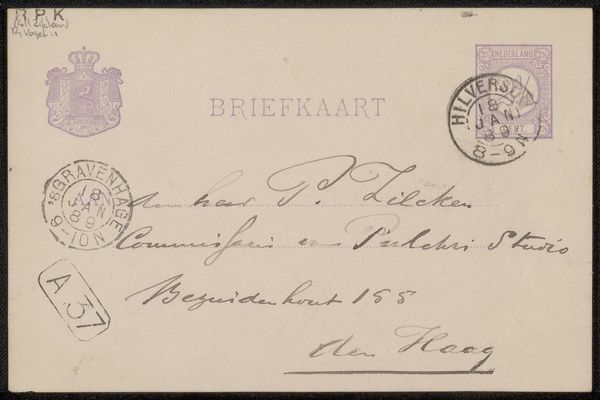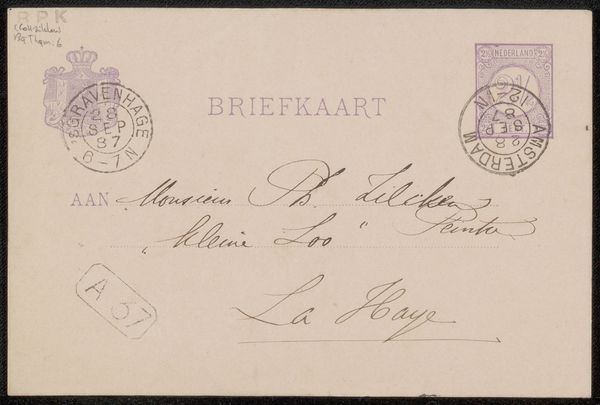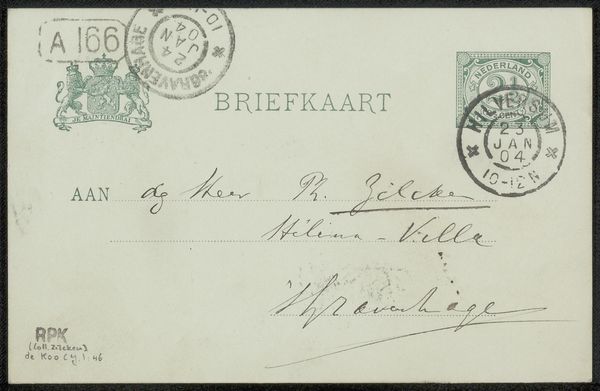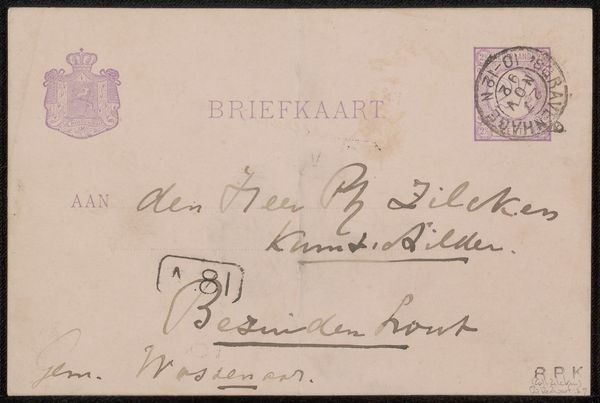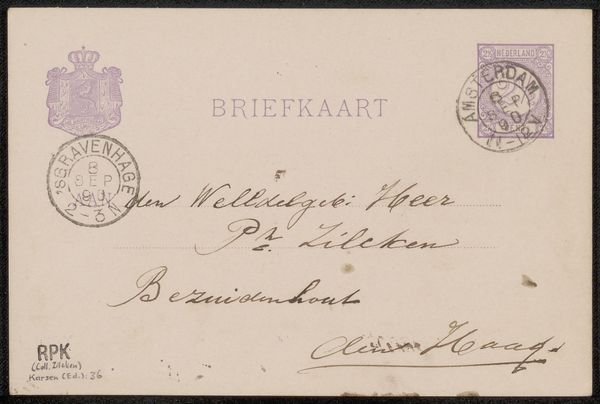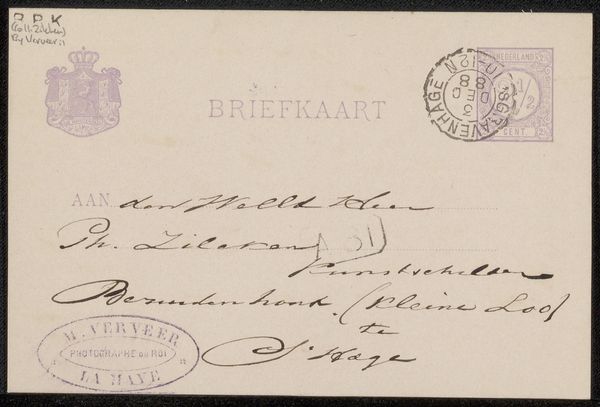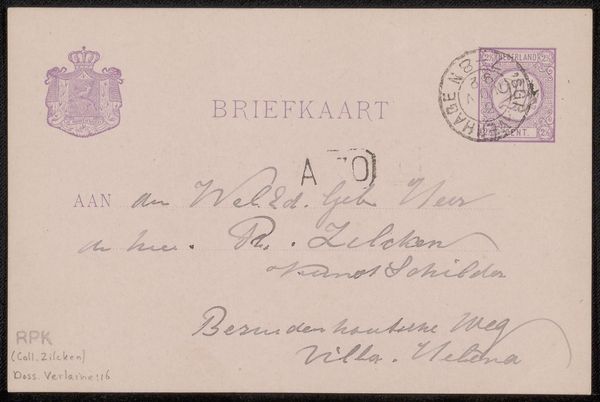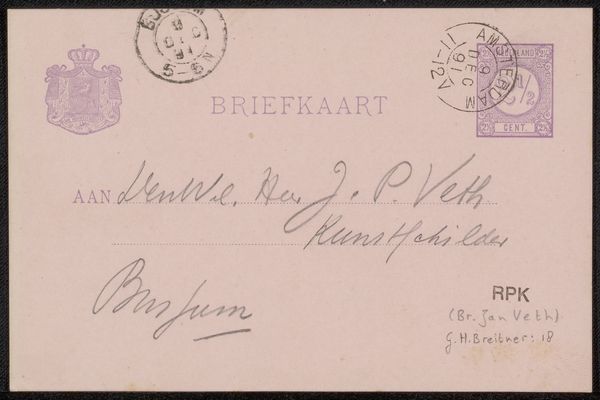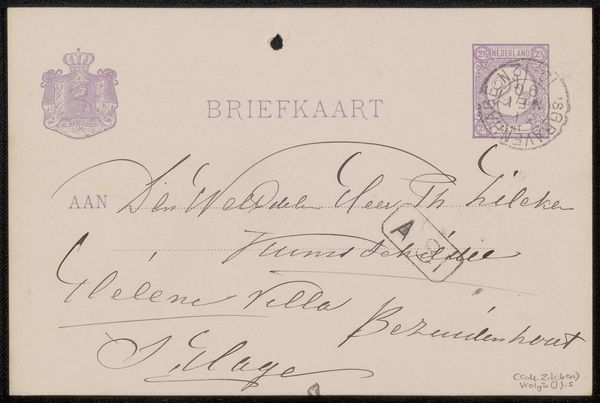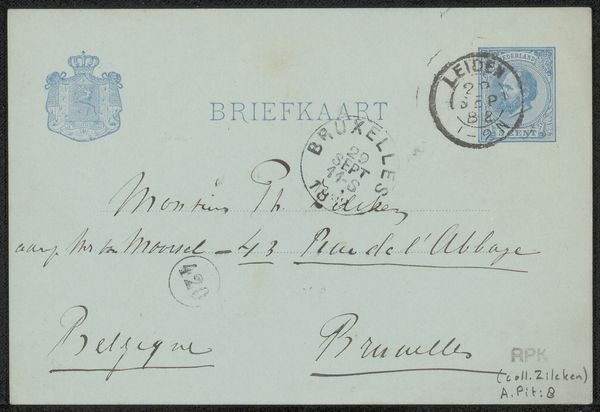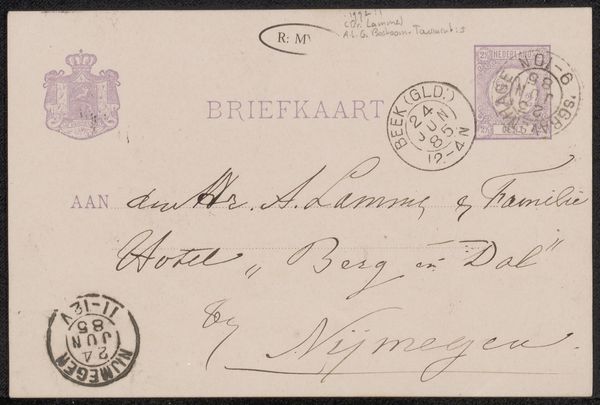
drawing, paper, ink, pen
#
portrait
#
drawing
#
hand-lettering
#
old engraving style
#
hand drawn type
#
hand lettering
#
paper
#
personal sketchbook
#
ink
#
hand-drawn typeface
#
pen-ink sketch
#
pen work
#
sketchbook drawing
#
pen
#
sketchbook art
#
calligraphy
Copyright: Rijks Museum: Open Domain
Editor: Here we have Julius Jacobus van de Sande Bakhuyzen’s "Briefkaart aan Ary Johannes Lamme," likely from 1889. It's a pen and ink drawing on paper – essentially, a postcard. The handwritten text and the stamps give it a very personal feel. What stands out to you? Curator: What I see is a layered historical artifact. On the surface, it's a simple correspondence, but consider the sociopolitical implications of letter writing at the time. Who had access to postal systems? How did literacy intersect with class and gender in late 19th-century Netherlands? It speaks volumes about power structures and accessibility. Editor: That’s interesting! I hadn't thought about it that way. So, the postcard itself becomes a symbol? Curator: Precisely. The very act of sending this "Briefkaart" – a form of communication – reveals a level of privilege and social mobility. Notice the handwriting, too; its flourishes speak to a certain level of education and social standing. It isn’t just what the letter says, but who can send it, to whom, and how. What does this say about access to communication in our digital age? Editor: I suppose it shows how much has changed, and how some inequalities may remain. Were there any contemporary art movements that were exploring similar themes around communication? Curator: Absolutely. Think of the Realist movement and its focus on portraying everyday life and social issues. While this postcard isn't explicitly Realist, it provides an intimate glimpse into the daily routines of the privileged. Who gets remembered in the art history canon, and whose voices are amplified through art and scholarship, is something we need to consider continuously. Editor: Thank you. That really reframed how I see this postcard. It's not just a personal message; it's a little document reflecting bigger social issues. Curator: Exactly. Examining seemingly simple artifacts through the lens of power dynamics can reveal so much about our past and present.
Comments
No comments
Be the first to comment and join the conversation on the ultimate creative platform.

